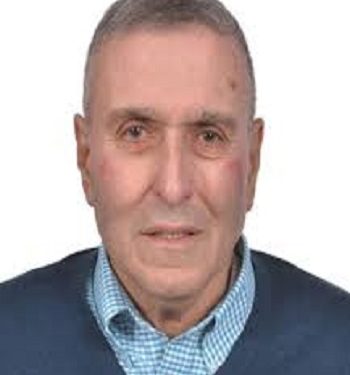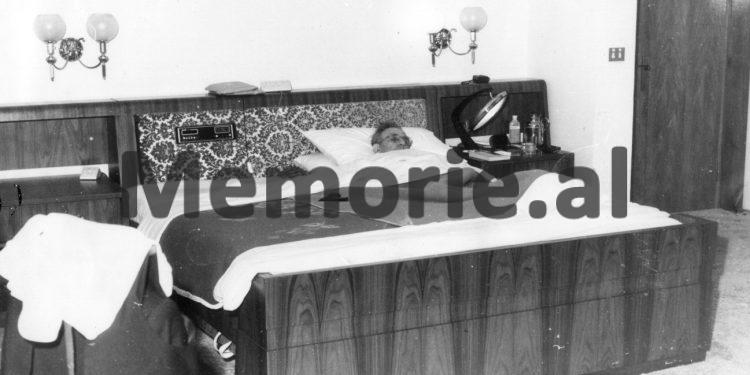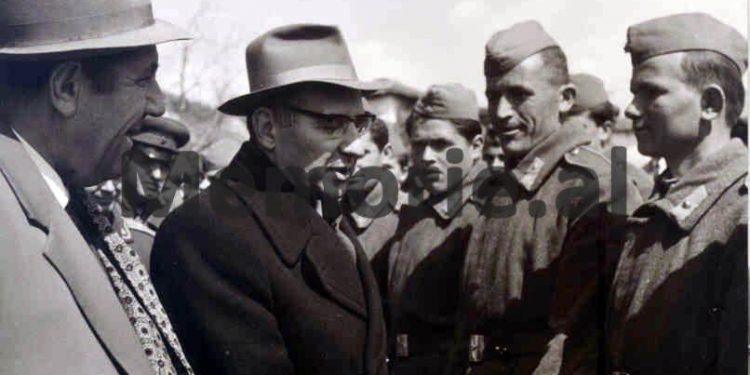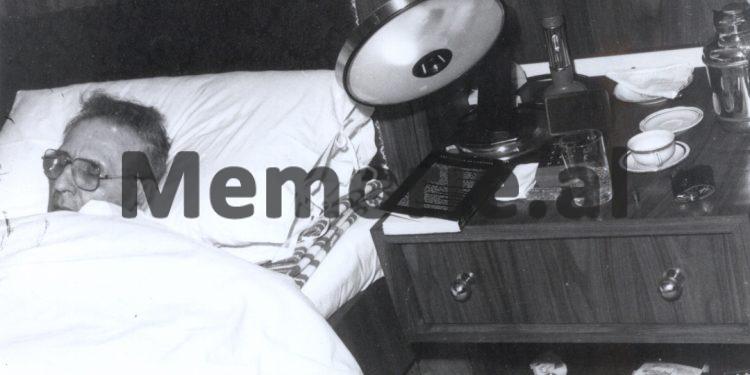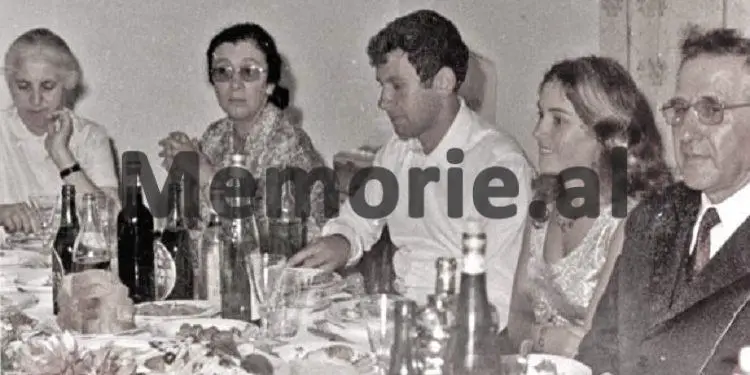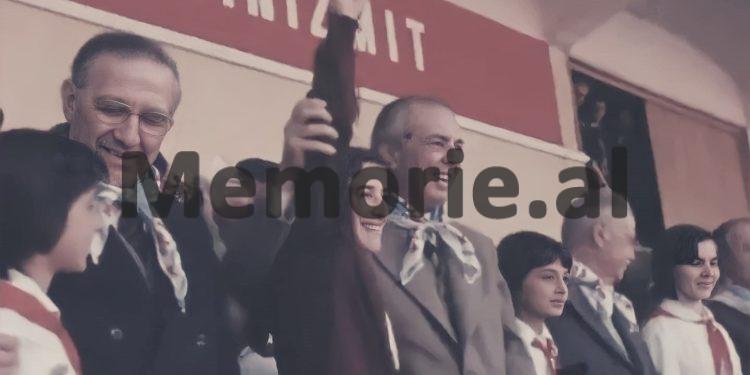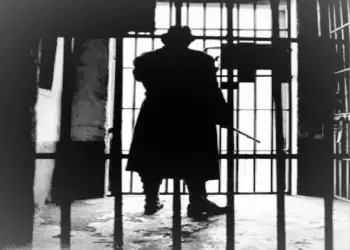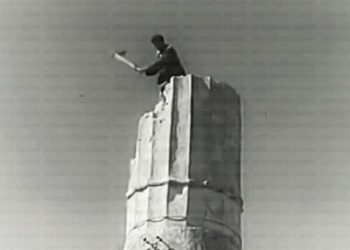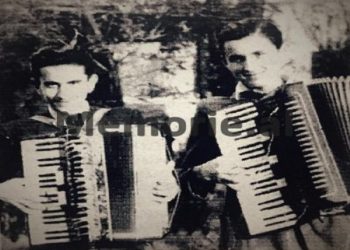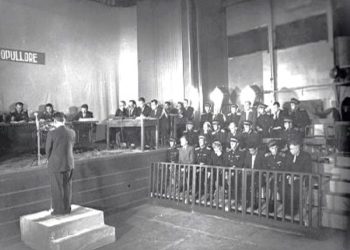By Prof. Dr. Bardhyl Çipi
Memorie.al / One of the most sensational events in our country, about which there are many discussions reflected in the press and media, even in many academic and literary publications such as novels, etc., is also the one of the death of former Prime Minister Mehmet Shehu. According to the official version, Mehmet Shehu, prime minister of the People’s Socialist Republic of Albania, killed himself on the night of December 17, 1981, in a moment of nervous crisis, because at a recent meeting of the Political Bureau of the Central Committee of the P.P.Sh. , he had just been severely criticized by Enver Hoxha and other members of this Bureau. But this version, after the 1990s, was not accepted by Mehmet Shehu’s relatives, friends and many other well-wishers. They announced publicly that he was killed.
The main scientific argument of the murder is based on the fact that after this serious event, the high authorities of the state and the party did not allow the autopsy of Mehmet Shehu’s corpse to be performed, while in other similar cases, it was performed. Since then, in the media and press, there have been numerous articles and books, which try to argue the murder.
On the other hand, the people of Enver Hoxha’s circle, relatives, those who had served him and many other followers of him, defend the official variant of suicide.
Exactly, at this time, around the year 2000, mainly to reinforce this position, the main materials of the investigation file of Mehmet Shehu’s death were published in our daily press, which included the minutes of the inspection of the scene, the acts of forensic and criminalistic examinations, accompanied by numerous photos of the corpse, as well as the testimonies of family members and persons who had served Mehmet Shehu, the day before he died.
But the most important argument, which supported the suicide, was undoubtedly the so-called farewell letter of Mehmet Shehu, which he had left before killing himself, which appeared and was published in the 2000s, by Paskal Milo, that is, over 20 years after the death of Mehmet Shehu. Afterwards, there have been many discussions, even published, with numerous elaborate justifications, mainly of a psychological nature, that try to reinforce the official version of suicide.
In these circumstances, I, as a medical-legal expert, but who has already retired and no longer works at the Institute of Forensic Medicine in Tirana, I do not think that I will violate the principle of confidentiality, if I analyze this event for which the details and her expertise, have been presented and discussed in all their details, in the press and media of our country. In the same way, I believe that I will not affect the dignity and independence of my colleagues, who carried out the expertise of this case, especially since they have also retired, or one of them is no longer alive.
Indeed, the idea to examine this event, in relation to its expertise, has occurred to me for many years, but I think that only now, the time has come for me to do this analysis, this in the spirit of forensic forensic medicine, to give a more mature opinion on the truth of this event, which will serve for a more complete clarification of the opinion of our country.
As is known, forensic medicine takes into account not only the data of the examination of the corpse, but also the investigative materials, the criminalistic ones and many others, to help the justice bodies to reconstruct the criminal event from the forensic and criminological point of view, in order to thus became possible, its legal classification: murder, suicide, or accident.
What are the data of the examination of the place of the event and the corpse, as well as the documents of the forensic forensic expertise, etc.
-In the minutes of the inspection of the scene, carried out by the head of the investigation of Tirana at that time, with the participation of the head of the bureau of medical and legal expertise in Tirana, another medical and legal expert as well as a criminal expert, describes in detail the bedroom of the house where Prime Minister Mehmet Shehu was found dead.
In this room, among others, a bed with a width of 181 cm is described and height 90 cm., as well as a bedside table on the left side of the bed. In the nightstand, there are various items, such as medications, etc., as well as a glass of yellow liquid and a pistol shell casing, caliber 9 mm., which smells slightly like gunpowder.
The bed has a sofa spring, a thick mattress and above it, a thin, white sheet and a double and a single blanket. On the left side of the bed, there is a corpse, male sex, age about 70 years, lying on his back, with his head slightly raised, placed on two pillows and a blanket folded under them; both hands are broken at the elbows resting on the body with the fingers half folded; the body is covered with blankets and bed sheets, up to the chin.
After moving the corpse, a penetrating hole with a diameter of 0.5 cm can be seen on the lower edge, almost in the middle of the upper pillow with a dark red spot around it, 3 x 3 cm; in the lower pillow there is a hole 0.5 cm., in the upper part of which, 4 cm. on the left, there is a dark red spot, 1 x 1 cm. In the blanket folded in eight parts, on the lower edge, almost in its middle, there is a piercing hole with a diameter of 0.5 cm. In the sheet, stuck to the mattress, 49 cm. from the left and 23 cm. from the head, a 9 mm caliber shell is found, which is taken as material evidence.
Almost in the middle of the bed, on the top blanket, 48 cm., away from the right hand and to the right of the corpse, there is a Makarov-type pistol, manufactured in 1954, with one cartridge in the magazine and five cartridges others in the comb. The clothing of the corpse consists above: a white poplin shirt and a white 3-button jacket (some of the buttons on the shirt and jacket are undone), while underneath, there is a pair of pajamas.
On the left side of the shirt, 14 cm. below the seam of her collar and 9 cm., to the left of the edge of the buttonholes, there is a slit, in the shape of a cross, measuring 3 x 2.3 cm; the edges of the damage have a dark color, especially, more pronounced in the upper part, around the material of the shirt, in the place above, it appears with a dark shade, in an area that extends from the right, at a height of 1.1 cm. , from the left side, 1 cm. above and below 0.5 – 0.8 cm.
Below this damage to the shirt, an irregularly shaped red stain begins, measuring 5.3 x 4 cm. On the left side of the canoe and exactly 12 cm. below the collar and 10 cm. away from the opening of the chest, an almost round injury with a diameter of about 1.4 cm is seen; the edges of the damage are presented in dark color.
Around the damage, in a measure of about 1 cm., there is a gray hematoma, 2 mm. below the damage, a red spot begins, starting 12 cm. above it, in the form of dashes, while below, it expands up to 12 cm. and captures the entire shirt, extending to the bottom, 30 cm.
At the back of the canoe, 26 cm. under the seam of the collar, approximately in its middle, an almost round-shaped injury is visible, with a diameter of 0.6 cm., with edges folded from the outside.
In the description of the corpse, among others, it is noted that:
-On the left side of the chest, 6.5 cm. from the midline, 3 cm. above the level of the nipple and 10.5 cm. below the clavicle, there is an ovoid soft tissue defect, 1.2 x 1.1 cm., with a surrounding crush ring, 2.5 mm wide, with minus tissue.
-On the left side of the back and exactly 7.5 cm. below the angle of the shoulder and 5 cm. from the midline, a soft tissue injury is seen, almost round, with a diameter of 0.6 cm.
-On the nail of the thumb of the right hand and 2-3 mm. to his left, there are dark blue spots, which do not disappear.
During the external examination of the corpse, no other injuries were observed.
– In the medical-legal act of the examination of the corpse of citizen M. Shehu, the same description is made as in the minutes of the inspection of the scene, but in relation to the dark blue dots of the nail of the thumb of the right hand, it is noted that they are from the action of pieces of gunpowder, it is also added that the right hand is made into a fist with the index finger closer to the palm.
The conclusion of this act is presented as follows:
- In the body of the corpse of the citizen Mehmet Shehu, a gunshot wound was found, with an entrance hole in the front left part of the chest and an exit hole in the left part of the back, with the characteristics mentioned in the descriptive part of this the act.
- The above damages were caused by a single shot of a firearm, at a non-hermetic kissing distance and directed from front to back, easily from right to left and from top to bottom.
- The death of the citizen Mehmet Shehu came from the hemorrhagic shock caused with the greatest possibility, as a result of the rupture of the heart or of the large blood vessels that come out of it. The death must have happened, about 10 – 12 hours before the moment of the examination of the corpse, which was carried out at 12:00.
The report of the technical-ballistic expertise of the pistol, casing and projectile found at the scene, as well as Mehmet Shehu’s fingerprints, to be compared with those found in the pistol cradle.
From this examination, carried out on the day of the inspection of the scene (December 18, 1981), supplemented with the tests made with the Griss and Diphenylamine reagents for the detection of additional factors of the shooting, it was concluded that; the pistol, technically regular and suitable for shooting, was fired today; the cartridges and shells found at the scene were fired with this pistol. The fingerprint on the pistol is of the same type, with the thumb mark of Mehmet Shehu’s left hand.
From the testimonies of the people who saw the corpse of Mehmet Shehu for the first time: his son, Vladimiri, companion Aali Çeno and doctors Milto Kostaqi and Llesh Rroku, etc., it turns out that; the corpse was found lying on its back, covered with sheets and blankets up to the neck, wearing yellow metal frame glasses and facing straight up to the ceiling. Doctor Llesh Rroku, saw about 1 m. away from the bed, a cartridge that he took and placed on top of the bedside table, on the left side of the bed, where Mehmet Shehu’s corpse was.
From the interpretation of the above documentation, according to forensic medicine, it is immediately noticeable that; their descriptions are detailed and the conclusions of the forensic and criminalistic acts are generally correct, but there are also some shortcomings.
Thus, the measurement of the height of the gunshot wound holes, from the soles of the feet, or the lower parts of the buttocks or buttocks (ischiadic tubercles) does not appear to have been carried out; likewise, it does not turn out that the laboratory and microscopic examinations, to determine the complementary factors of the shooting, in the tissues and soft tissues around the entrance hole of the gunshot wound and of the dark blue dots of the fingernail have been carried out of the right hand, all of this, very important for the most scientific determination of the mechanisms of this event.
In addition to these, there are also some actions, the performance of which has not been allowed by the higher state authorities:
– An autopsy of the corpse was not performed (it was forbidden to send the corpse to the morgue for its performance), despite the fact that, in gunshot injuries, a complete and detailed external examination of the corpse is more important. However, the autopsy would make it possible to accurately detect the canal and the tissues and organs affected by the passage of the projectile inside the body, the cause of death with scientific accuracy, as well as the finding of any eventual toxic substance that could was used before death.
– In the presentation of numerous photos of this case, those of the back of the body are missing.
– The graphic examination of the farewell letter, which the victim is thought to have left before his death, has not been carried out; she disappeared immediately before the start of the investigation of the scene. As is known, the farewell letter is written by the person before committing suicide and left by him, usually in places that are easily discovered, as it is claimed in the case of Mehmet Shehu, when this letter was found by his son, at the head of the bed where the corpse was located.
This letter must be carefully examined by the investigative team of the scene, in its original, in order to determine whether it was really written by the hand of the suicide bomber. For this, it must also be subjected to a comparative graphic examination, with the aim of excluding forgery or the intervention of a foreign hand in its compilation, as is encountered in many cases, of concealing murders.
This is even in those cases, when this letter contains reflected thoughts of the victim himself, which may have been written by the victim himself, when he was alive, but which were then manipulated by the killer. These reservations, which question the authenticity of the farewell letter, may also have been in Mehmet Shehu’s alleged farewell letter. Even more so, that this letter found at the scene of the event, immediately disappeared from the Party bodies and appears after 21 years, from this event. Under these conditions, it has no investigative value.
– An investigative experiment was not carried out to reconstruct the event, the position the victim had at the time of the shooting, this, by determining the trajectory of the fatal projectile, from the body to the place where it was found, in the part the top of the mattress, near his head.
Let’s imagine with the data we have, how this trajectory and the position of the victim must have been. Thus, in the gunshot wound holes on the left side of the chest and back of this case, the exit hole is slightly lower and more inward (closer to the midline) than the entry hole. This shows that; the passage of the projectile in the body was not only from front to back, but also from above-below and from outside-inside, i.e., from left to right (not from right to left, as it is written incorrectly , in the medical-legal act).
With these findings, also reflected in the conclusion of the relevant medical-legal act, taking into account that; bullet was found 23 cm. from the head of the sheet of the bed mattress, shooting the victim lying on his back on this bed is impossible, because, with a top-down direction, in this position, the projectile would go closer to the middle of the bed and not near the top of it, where it was found.
Most likely, the position of the victim, at the time of the shooting, was sitting near the middle part of the bed, with the upper half of the body in a vertical position. In support of the idea that this was the position of the victim, in which she must have been for a shorter or longer period of time, after the shooting with a firearm, is also the widespread presence of blood, in the form spots, on the lower parts of the tesserae, below the shell holes.
Indeed, this standing position of the victim at the time of the shooting would have been more accurately established if the investigative experiment had been carried out immediately, or later, after the event, using a string or laser light. , placed or released according to the angle of this shot and the height of the injuries, in the standing position of the victim, towards the place where the projectile was found. The region where the entrance hole of the gunshot wound is, on the upper left side of the chest, is found in both suicides and murders. The difference is made by the direction of the shot, or the passage of the projectile into the body.
From the relevant literature and the long medico-legal and criminological experience of our country, as well as from my personal experience, suicide aims to have the most favorable and stable position of the right hand, holding the weapon, with the direction of shooting from front-back, horizontally, or slightly from above and from the right, to the left.
According to the forensic and criminological data of Mehmet Shehu’s death, which support the official version of suicide, the victim shot himself with the gun he was holding with his right hand, sometimes assisted by his left hand, which held the front part of his of the gun (finding the thumbprint of the victim’s left hand on the front of the gun). This, due to the fact that the weapon was found thrown, on the right side of the bed, the position of the hand in that cataleptic stupor (in my opinion, without any scientific basis) and the presence of gunpowder, in the thumb of the right hand ( this finding, unproven even with a simple laboratory analysis to exclude another origin).
With these data, according to the suicide version, the shooting direction, according to the most favorable position of the hand holding the weapon, should have been from front-back and horizontally, or from above and from right to left. But this direction has not been established in the case of Mehmet Shehu’s death. It was from front to back, but not horizontally or from bottom to top, but from top to bottom and not from right to left, but from left to right. This direction of the shot, along with the other details of the victim’s position, speaks clearly that this is a pure case of murder.
So, the biggest possibility is that; the death of Mehmet Shehu, to have been murder. The executioner, who must have been standing on the left side of the bed, in front of and slightly above the place where Mehmet Shehu was sitting, more or less in front of him, shot the victim, with a firearm, on the left side of the chest with a shooting direction, more favorable for him: from front-back, from above-below and slightly from the left, to the right, as it resulted from the forensic and criminalistic examinations of this event.
This analysis of the materials in this case reinforces my conviction, in accordance with this, also with other data (not allowing the autopsy to be performed, hiding the so-called farewell letter to reappear after 21 years, etc.) and the opinion expressed earlier, or later, in favor of homicide, by some of the doctors who examined or examined the corpse, immediately after this event, that Mehmet Shehu’s death was murder and not suicide. Memorie.al




